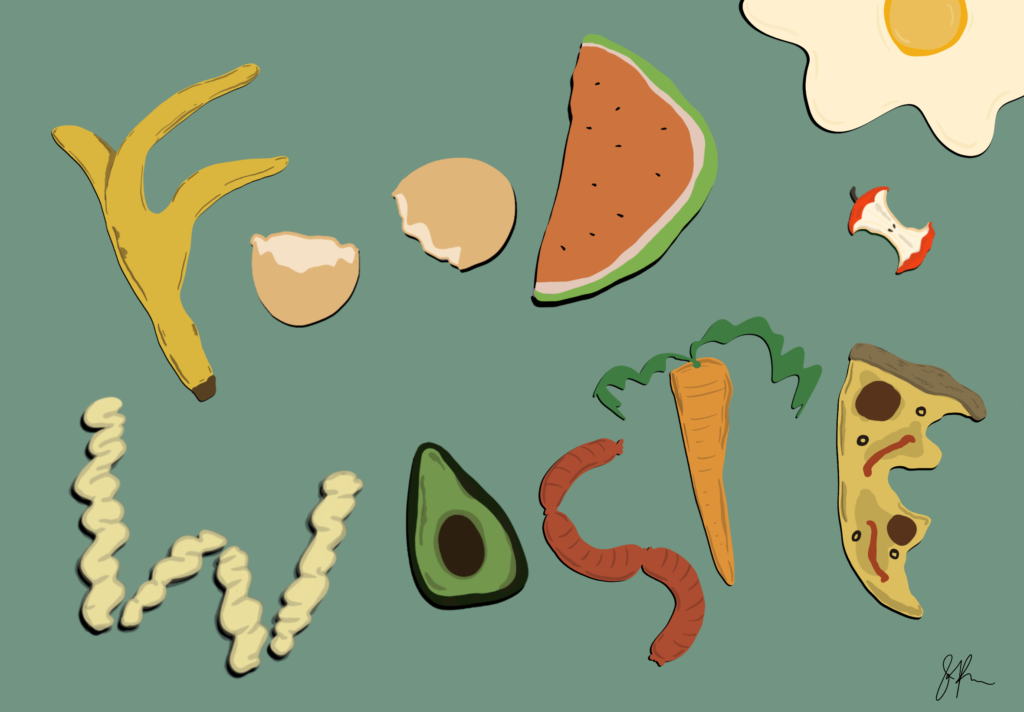
Have you ever wondered where the food you throw out goes and how it impacts us? Many people understand the concept of food waste but might not fully grasp the negative impact on our environment and society. By recognizing these effects, we can assess the consequences and take meaningful steps toward reducing our waste.
How much food is wasted in America?
Food waste is the first largest contributor to organic in the US landfills, accounting for approximately 22 percent of municipal solid waste (MSW). MSW, also known as trash or garbage, is a nonhazardous combination of everyday items people throw away. Globally, 2.5 billion tons of food are discarded annually. The United States alone discards nearly 60 million tons, or 120 billion pounds, of food annually. That translates to 325 pounds of waste per person, which is equivalent to each American throwing 975 perfectly edible apples straight into the trash bin. The amount of food wasted in America shows an approximate value of nearly $218 billion, which could have provided almost 130 billion meals.
Why do we waste so much food?
Food in the United States is considered plentiful and affordable; while this is a positive aspect, it can lead people to take it for granted, unlike other parts of the world. Our society is often impulsive, purchasing excessive amounts of food than they need, resulting in leftovers and tossing them out even when they can still be consumed. Nearly 40 million tons–30–40 percent–of the US food supply is discarded, which surpasses food waste in other countries.
What happens to the food we waste?
Many people underestimate the severe impacts of food waste once it ends up in landfills. As food waste decomposes in landfills, it produces methane, a greenhouse gas 28 times as powerful as CO2 at trapping heat in the atmosphere. This contributes significantly to global warming and many other severe global environmental problems.
How do we gain food recovery?
Through innovative solutions and community efforts, there has been promising progress made in attempts to gain food recovery. In September of 2016, Governor Brown signed Senate Bill 1383 (SB 1383), known as the Short-Lived Climate Pollutant Bill. The law went into effect on January 1, 2022. SB-1383 is a state-mandated effort to reduce organic waste in California landfills by 75% and to increase excess edible food recovery by 20% by 2025, it is focused on addressing greenhouse gas emissions, especially methane gasses. These laws are not restricted to California, other states like Connecticut, Massachusetts, New York, and Rhode Island have passed similar laws in efforts to restrict the amount of food waste going to landfills. For example, Vermont’s “Universal Recycling Law” went into effect in July 2020, banning food waste completely. According to the Vermont Foodbank, the result of this new law revealed a 40 percent increase in food donations statewide. In 2019 the New York City Department of Sanitation proposed that each year food-related businesses would be required to separate organic waste to keep 100,000 tons of wasted food out of landfills.
In both Main and Rhode Island, efforts to reduce the amount of food waste in schools have risen. Nationally, the US Department of Agriculture (USDA) and the US Environmental Protection Agency (EPA) set a goal in 2015 to reduce food waste by half by 2030.
How can we make a change in our homes?
As a society, there are many ways we can make a collective change According to RTS, these are five major ways we can start to make a change:
- Don’t misinterpret expiration labels on food that can still be consumed.
The Grocery Manufacturers Association has worked to combine the efforts of two simplified phrases and what they mean. “Best if used by” describes the food’s quality: “where the product may not taste or perform as expected but is safe to consume.” “Used by” applies to “the few highly perishable products and/or have food safety concerns over time.”
- Learn and practice how to compost correctly.
This will help keep food scraps out of landfills and prevent an increase in greenhouse gas emissions.
- Freeze foods that won’t be consumed immediately.
- Share and care.
Donate food for meal donations or food pantry donations. There are so many programs and hands offering a place for donations. This will not only prevent any waste but also help the people in need of those foods that you might not need.
- Plan an effective shopping list.
Even if you can afford excessive amounts of food, It is important to plan how you make use of those groceries to ensure they won’t go to waste.
References
- “Food Waste in America in 2024: Statistics & Facts: RTS.” Recycle Track Systems, www.rts.com/resources/guides/food-waste-america/. Accessed 27 July 2024.
- 27, ByStephanie Safdieupdated Jun. “Global Food Waste in 2024.” Greenly, 27 June 2024, greenly.earth/en-us/blog/ecology-news/global-food-waste-in-2022. Accessed 27 July 2024.
- www.weho.org/city-government/city-departments/public-works/environmental-services/trash-and-recycling/sb-1383#:~:text=In%20September%202016%2C%20Governor%20Brown,various%20sectors%20of%20California’s%20economy. Accessed 27 July 2024.
- “Understanding CA SB-1383.” Abound Food Care, 1 Sept. 2022, www.aboundfoodcare.org/sb1383/?gad_source=1&gclid=Cj0KCQjwtZK1BhDuARIsAAy2Vzt8bOltX1ptrIq7IGlqQpJ_xQw0GdC-frq_51Bk14Kk05-g02VmwwoaAoG2EALw_wcB. Accessed 27 July 2024.
EPA, Environmental Protection Agency, www.epa.gov/sustainable-management-food/sustainable-management-food-basics#:~:text=The%20wasted%20food%20rots%20and,methane%20emissions%20to%20the%20atmosphere. Accessed 27 July 2024.
The views and opinions expressed are those of the authors and do not necessarily reflect nor represent the Earth Chronicles and its editorial board.




